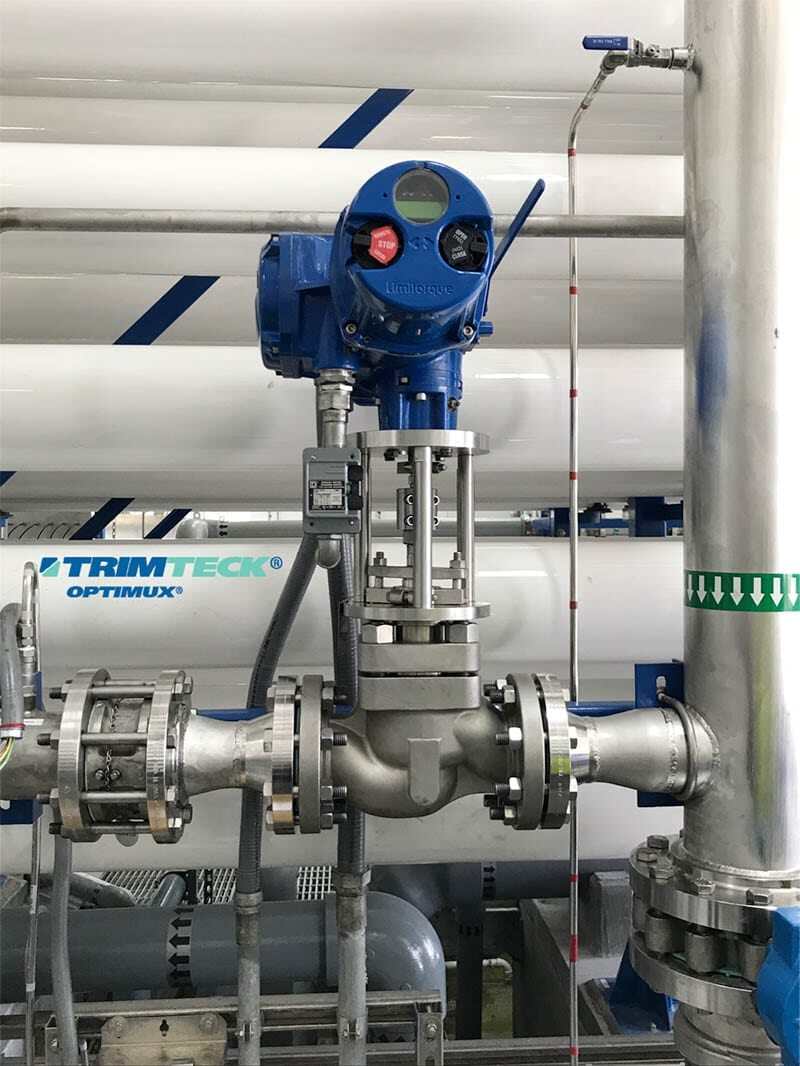Control Valves 101: Key Control Valve Components
Every control valve has to meet the specific requirements of its process control system—this includes everything from the type of service it has to handle to how it fits with other components like pipework and actuators. At Trimteck, we can create customized control valves that help our customers optimize their throughput, as well as maintain efficiency and safety standards. But, to do so, we have to make incremental decisions about the dimensions and materials of the control valve’s key components.
In this post from our “Control Valves 101” blog series, we’re going to break down the key components of a control valve and the important design choices that have to be made based on configuration and application.
Body-end connections
Every control valve has a passage that allows fluid to enter and leave. The entrance and exit of this passage are referred to as the body ends. For a control valve to fit into a certain part of a process control system, its body ends have to be compatible with its adjoining elements. This is where body-end connections come into play.
There are various body-end connections that allow a valve to be fitted to the system’s piping. In ideal circumstances, the valve’s end connections and materials will match those of the system to ensure the maximum efficiency and life cycle of the control valve.
The three main body-end connection types are threaded, flanged and welded.

Face-to-face dimension
Once you’ve established the general type of body-end connection that you need to fit your control valve, you also need to factor in the face-to-face dimension. This is the distance between each of the control valve’s body ends, specifically their pipe mating surfaces—the part that comes into contact with the pipes on each side. It is always measured surface-to-surface, regardless of the type of body end connection (threaded, flanged or welded).
Engineers need to specify the face-to-face dimension of a control valve so that they know it will fit into their existing process control system. Alternatively, the face-to-face dimension allows engineers to factor the right space for control valves into a new process control system.
.png?width=280&height=300&name=Untitled%20(8).png)

Body and trim materials
In most cases, the end-user of a control valve will specify the material that the valve body is made out of. This autonomy is even more important when it comes to special or severe service applications. These tend to need special alloys such as hastelloy B and C, titanium, monel or bronze.
But, general service valves are usually specified with commonly found materials that match standard pipe materials, such as carbon steel, stainless steel and chrome-moly.
Before they create the body of a control valve, manufacturers have to decide which method they will use. The main choices are casting, forging, or machining from bar stock—a form of raw but purified metal. Standard sand casting is the most common method that manufacturers use.
At Trimteck, we use an advanced investment casting method as our standard for control valve bodies between .5” and 4”. This has several benefits for our control valves:
- Consistent and repetitive close tolerances—the precision with which the valve can control the flow rate
- Superior integrity and no porosity (which can lead to holes forming over time)
- Fatigue performance equal to that of forging methods, meaning fewer failures
- Minimal need for machining, which adds to costs
In addition to the valve body materials, it’s crucial to use the right trim materials for control valves. Every valve part is exposed to pressure, process fluid, corrosion and other effects of the service. So, regulation dictates that they must also be manufactured from approved metals such as stainless steel and Stellite.
At Trimteck, we have pioneered the use of CVD-5B, an advanced hardening technology first used in the aerospace industry. We use it for applications that require elevated material hardness levels and resistance to corrosion and abrasion.

Gaskets
A gasket is a malleable material that is inserted between two parts to prevent leakage between a joint. In a control valve, gaskets are used between the valve bonnet and valve body, as well as between the seat ring and the valve body.
Gaskets can be made of either soft or hard materials. Soft materials like polytetrafluoroethylene (PTFE) are suitable for low-pressure services. But, high-pressure and high-temperature services will need to use hard materials like graphite for their gaskets.


Navigating the nuances of control valves
Each Trimteck custom specialty control valve is the result of a rigorous, precision-engineering process that factors in all the requirements of a unique system. Identifying and wrangling that many data points takes up valuable time that could be invested in other system optimization projects.
That’s why we developed our AccuValve™ software at Trimteck, to streamline this process for our customers. The sizing and selection software helps gather the exact data you need to specify the optimal solution for your process control system. And, you’ll have your quote back from the Trimteck team within 24 hours of submitting your results. Start your streamlined specification process today.


